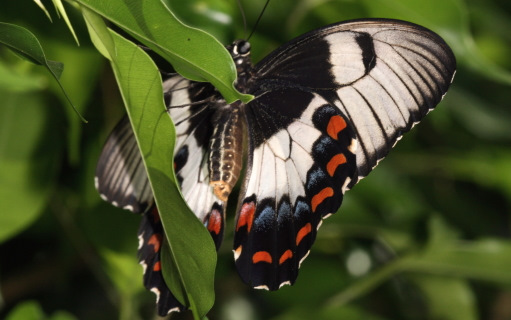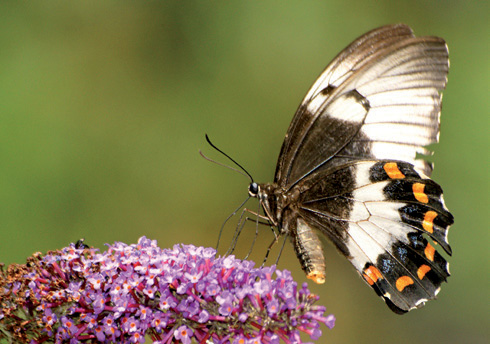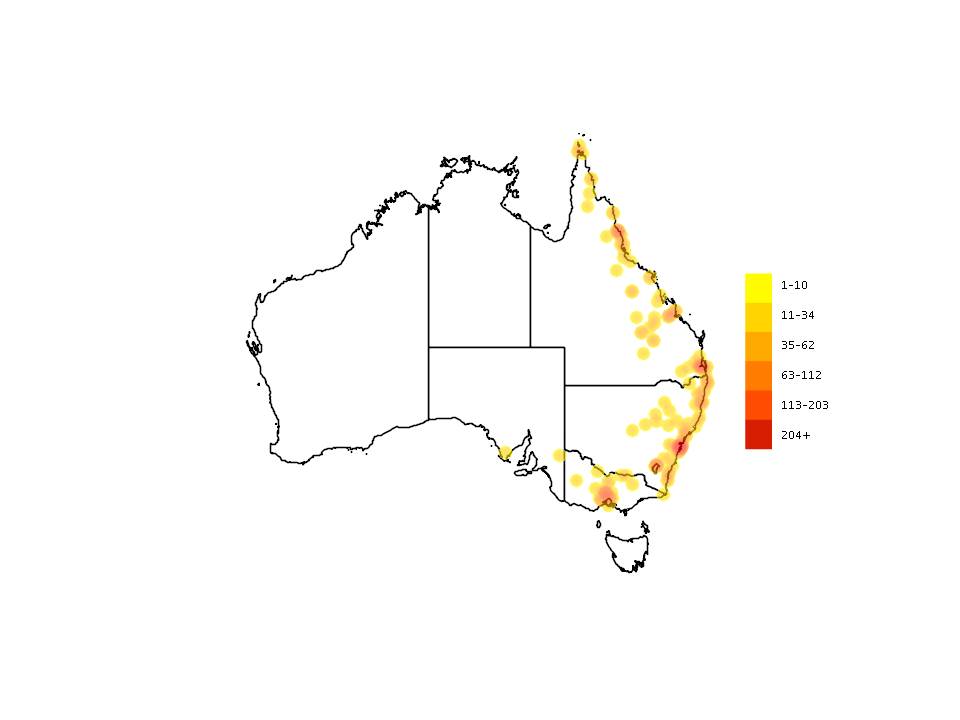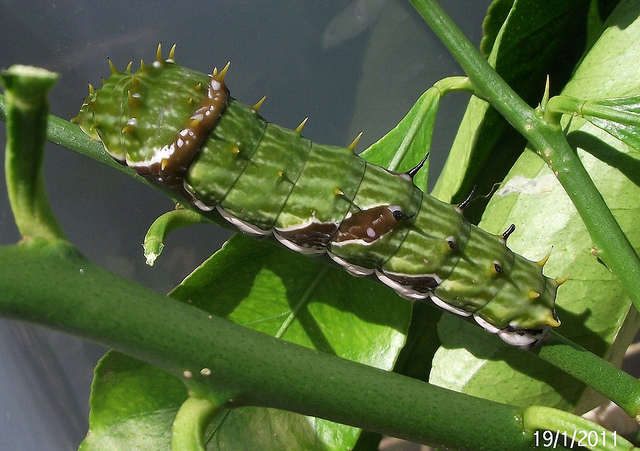Behaviour
Diet
The caterpillar eats the leaves of many plants, particularly citrus and native species from the Family Rutaceae; it prefers to eat young leaves but large caterpillars will eat older leaves. The butterfly feeds on nectar from a variety of plants, particularly lantana.
Movement
If disturbed, a caterpillar will reveal a red-orange “tentacle” (known as the osmeterium) from behind its head which emits a foul smell to deter predators.
Flight
Generally slow and erratic unless disturbed, and females fly more slowly during the egg-laying period. The males tend to “patrol” flight paths.
Breeding
Females lay eggs on the underside of host leaves, and the eggs hatch one week later.
Field Guide
Improve your identification skills. Download your Orchard Swallowtail field guide here!





